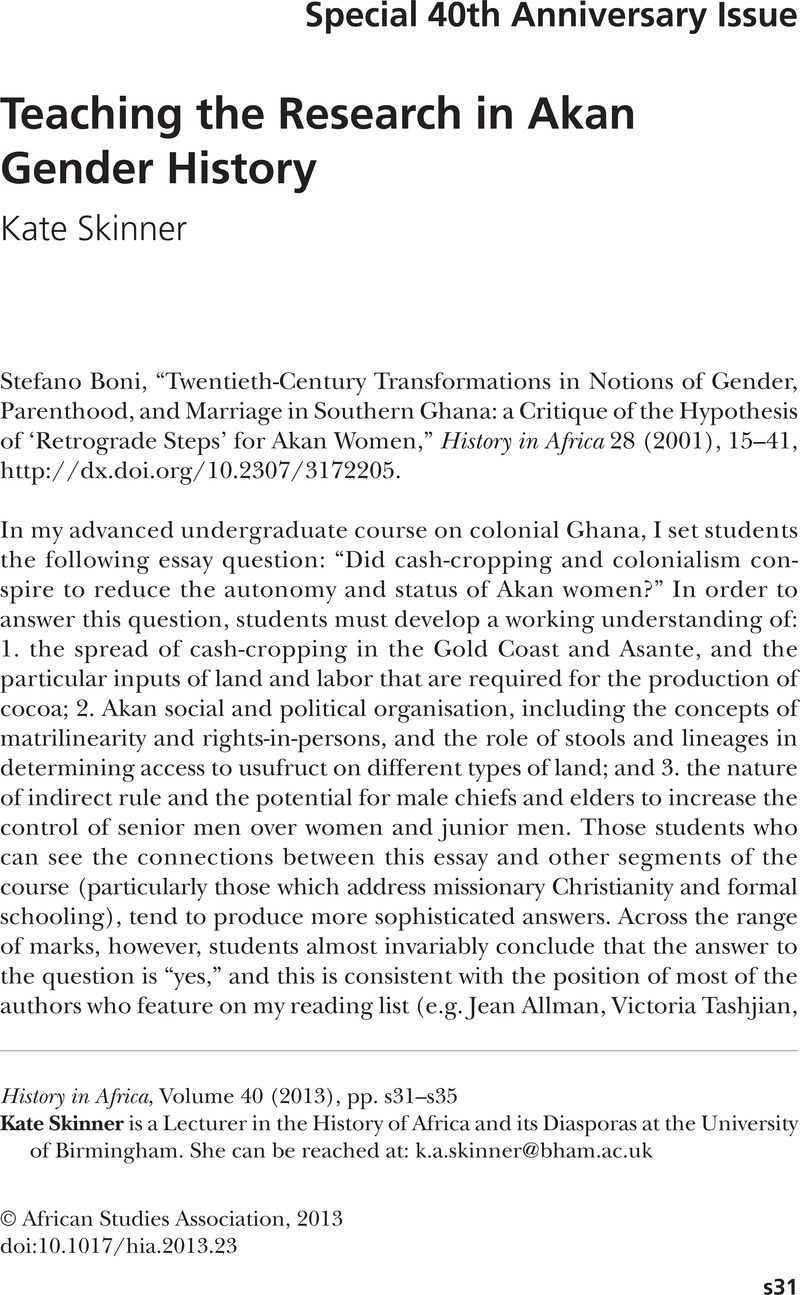No CrossRef data available.
Published online by Cambridge University Press: 15 November 2013

1 Boni, “Twentieth-Century Transformations,” 16.
2 Boni, “Twentieth-Century Transformations,” 17.
3 Boni, “Twentieth-Century Transformations,” 27. Cati Coe returns to this argument in her recent discussion of debt, care and pawnage. See: Cati Coe, “How Debt Became Care: Child Pawning and its Transformations in Akuapem, the Gold Coast, 1874–1929,” Africa 82–2 (2012), 287–311.
4 Boni, “Twentieth-Century Transformations,” 33.
5 Christine Oppong, Christine Okali and Beverley Houghton, “Women Power: Retrograde Steps in Ghana,” African Studies Review 18–3 (1975), 71–84.
6 Boni, “Twentieth-Century Transformations,” 18.
7 Richard Reid, “Past and Presentism: The ‘Pre-Colonial’ and the Foreshortening of African History,” Journal of African History 52–2 (2011), 135–155.
8 For two outstanding examples of how this might be approached, see: T.C. McCaskie, State and Society in Pre-Colonial Asante (Cambridge: Cambridge University Press, 1995); T.C. McCaskie, Asante Identities: History and Modernity in an African Village 1850–1950 (Edinburgh: Edinburgh University Press, 2000).
9 Boni, “Twentieth-Century Transformations,” 22.